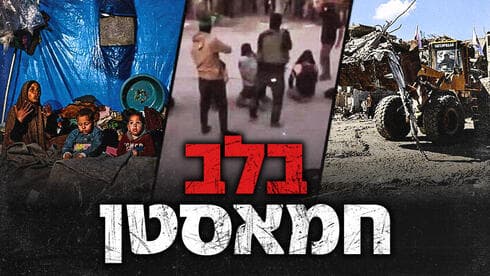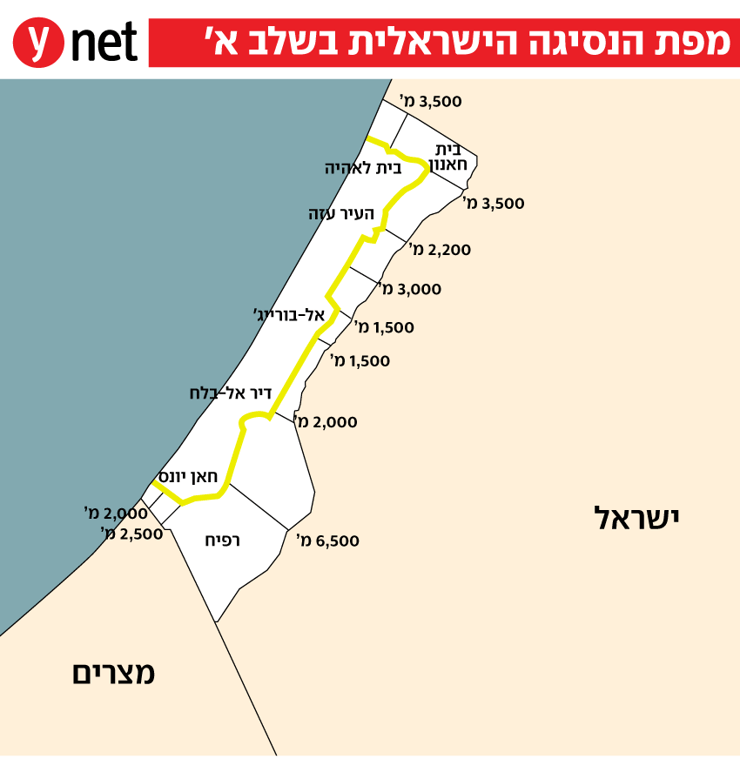
Opponents of the terrorist organization thought the agreement heralded the end of its rule, but Hamas has launched a hunting campaign, enjoying a support base - and its militants are taking over the streets."The 'safe zones' under Israel, the chaos in the rest of the Strip, the complicated future and the reconstruction that will take years:"No water, no electricity - just dust and memories." The Gaza Strip in the "Day After", a snapshot
Milk grape
|
More than two years after the start of the war, the Gaza Strip is changing again. Hamas is trying to renew its grip on it, Israel hopes that its disarmament will succeed, and the international community is searching for a formula for the reconstruction and stability of the region. But on the ground, between the flags of Qatar and Egypt on tractors and tents being rebuilt in camps, the feeling that unites most of the residents of the Strip is clear: a deep fatigue from the war and life among the ruins.
7 Viewing the gallery
A Hamas man while transferring dead hostages to the Red Cross (Photo: Reuters/REUTERS/Dawoud Abu Alkas)
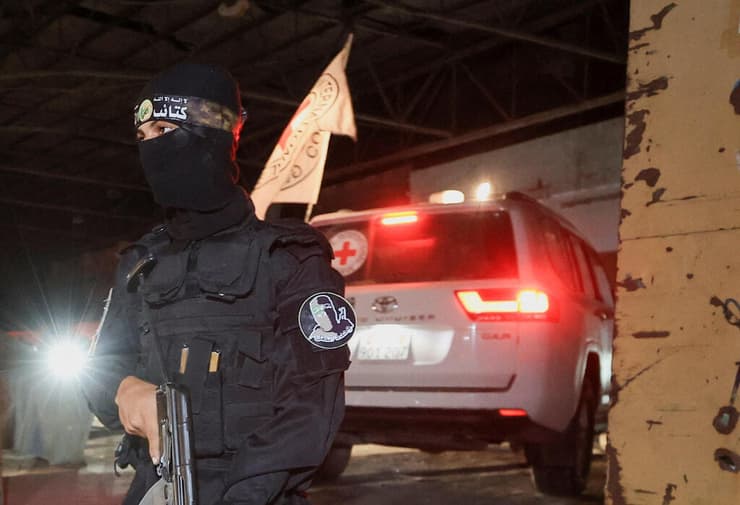
According to the map "
The Yellow Line
"Published last Saturday, Israel controls more than half of the Gaza Strip - about 58% of the total area. The Rafah area in the south of the Strip remains under full IDF control, and large parts of Khan Yunis are still under Israeli supervision. In the north of the Strip, neighborhoods such as Beit Lahiya and Shagayya remain under Israeli control, but nearby Hamas's presence is felt through its"security forces." The United States, in any case,
Wants to turn Israeli-controlled territories into "safe zones"
, where Gazans can live without Hamas's regime of terror.
The yellow line divides the areas where the IDF holds control - mainly around the main roads and in open areas - and areas still under Hamas control, to which Palestinians have been gradually allowed to return. Due to the Israeli presence on the main roads, Hamas' control is still not complete in the areas from which the IDF withdrew.
The IDF spokesman in Arabic, Lieutenant Colonel Avichai Edrei, warned Gazans not to enter areas marked as"danger zones" - and, among other things, repeatedly mentioned Beit Hanoun, the Rafah Crossing, the Philadelphia Corridor and the northern areas of Gaza City - where localized clashes are still taking place. He also said that it is forbidden to approach the buffer zone near the perimeter fence. The announcements made it clear to Gazans that entering the marked areas could expose them to the danger of live fire and unexploded mines, and indeed, since the ceasefire was declared, IDF attacks have occurred more than once against suspects who came too close to the forces.
"I thought Hamas would leave"
With the ceasefire coming into effect,
Hamas gunmen were seen almost immediately.
Returning to the streets of Gaza in official uniforms. The terrorist organization's"internal security" and police units appeared at major intersections, while local government officials - mayors, district administrators and officials - resumed operations. Hamas even appointed new governors, former commanders of the military wing, and in less affected neighborhoods, signs were placed with the inscription"We will bring Gaza back to life."
"Gaza could quickly return to acute shortages." Humanitarian aid at the Rafah crossing (Photo: REUTERS/Stringer)
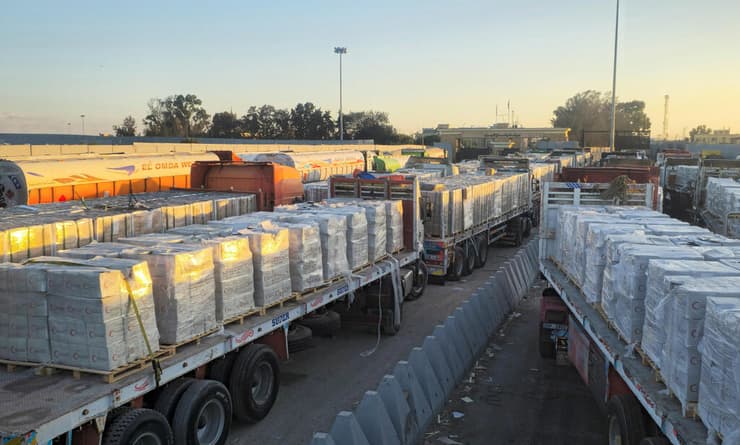
Suleiman, a resident of the central Gaza Strip, said that for him, nothing had changed."I thought that after the war and all the suffering we went through, this organization would leave us. But it turned out not to be the case," he said."Immediately after the war, when the citizens were preparing to return to their plots of land - because most of the houses were destroyed - we were surprised to see that Hamas had deployed its men in the field, some in uniform and some without, as if nothing had happened, as if we were back to 6/10. On the other hand, people are still afraid of them, because we have already seen what they are capable of doing. The feeling is one of deep disappointment, alongside constant fear."
In a conversation with Ynet, another young Gazan claimed that"if there was a free vote in Gaza, you would find that 90% want Hamas to leave. Their opposition has only brought destruction. After the agreement, if they insist on staying, the world will not stand by them."
But the big picture is more complex. In the various polls conducted deep into the war, Hamas still enjoys a support base of about a third of the Gazan public, although less than 50% in pre-war polls - but a small drop compared to the disaster it brought to the Gaza Strip. In a poll conducted last week by the Palestinian Center for Public Opinion (PCPO), it emerged that 71% of the Gazan public believe that"there is no winner in the war" - and that the residents are now mainly inclined to "weariness from struggles" and a desire for stability.
"Who turned in Muhammad Daf?". Documented execution in Gaza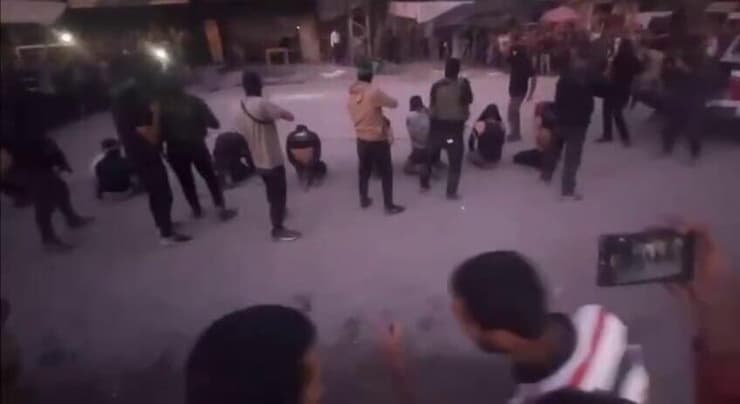
These results reflect the longing of the Gazan public - both those who support Hamas and those who do not - for an end to the reality brought about by the war, which includes constant displacement, instability, rising crime, and an atmosphere where every ounce of power prevails. Therefore, and relying on its existing support base, Hamas announced immediately after the ceasefire that it would not allow a"security vacuum" in the Gaza Strip - even though, according to the Trump plan, they are supposed to disarm, let alone rule.
Thus, Hamas has now turned most of its efforts inward, to the war for control within the Strip and to establish facts on the ground. Under the banner of"restoring governance and security," one of the most brutal struggles is currently underway between Hamas and local clans and armed elements that it perceives as threatening its stability - as part of what the terrorist organization calls a broad operation against "armed gangs" and "collaborators."
Hunting the "traitors"
The units responsible for the operation are "Saham" and "Rada" - security arms operating directly under Hamas's internal command. The operation includes public executions, arrests, confrontations, torture in public, battles and assassinations of political opponents - especially among well-known clans such as Dogmush and Al-Majaida, which support the Abu Shabab and Al-Astal militias. What makes this operation difficult to be effective is that many clans operate in areas under Israeli control, and therefore Hamas cannot reach them."They can only deal with the rebels in areas that are still under their control," explains a source in the Gaza Strip."Hamas does not fire at places where the IDF is present."
The well-known Arab-Turkish journalist, Yusuf Oglu, said that"Hamas is trying to show the world that it is capable of imposing security like the Palestinian Authority in the West Bank. This is its way of proving that it deserves international recognition - even at the cost of eliminating opponents."
"Only survival remains." Gazans in a makeshift shelter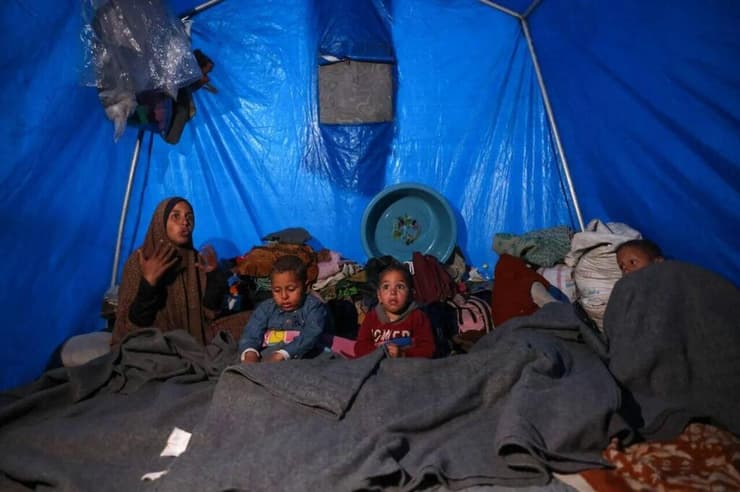
Palestinian Authority Chairman Abbas condemned the wave of public executions and torture in Gaza, saying that"these are heinous and unacceptable crimes."
Hamza al-Masri, a well-known activist who opposes the Hamas government, criticized the organization in an interview with Al-Arabiya:"It is impossible for the same person to simultaneously fulfill the role of judge, ruler, and punisher," he said."Instead of launching investigations and eliminating Gaza civilians through 'security operations' - it is better to find humanitarian solutions for the people who are currently on the streets and have no place to live."
Al-Masri added that "if Hamas is indeed capable of capturing spies, it must first pursue the agents within it. For example, Muhammad Deif - no one in the Gaza Strip knew where he was, so how exactly was he killed? Who passed the information to Israel? These are questions that require answers. It is better to ask such questions than to accuse entire families of collaborating or working with the enemy. A family that lost 730 people in the war is presented as 'traitors'."
Meanwhile, according to local sources, field meetings were held this week between the commanders of the Al-Qassam Brigades Military Council and some of the heads of the large clans and families in the Gaza Strip. As a result, hundreds of young people were re-enlisted in the ranks of Hamas security units. One participant described it as “an attempt to restore order to the streets and show that the terrorist organization has full control.”
55 million tons of rubble. A tractor with a Qatari flag operates in Gaza (Photo: AFP)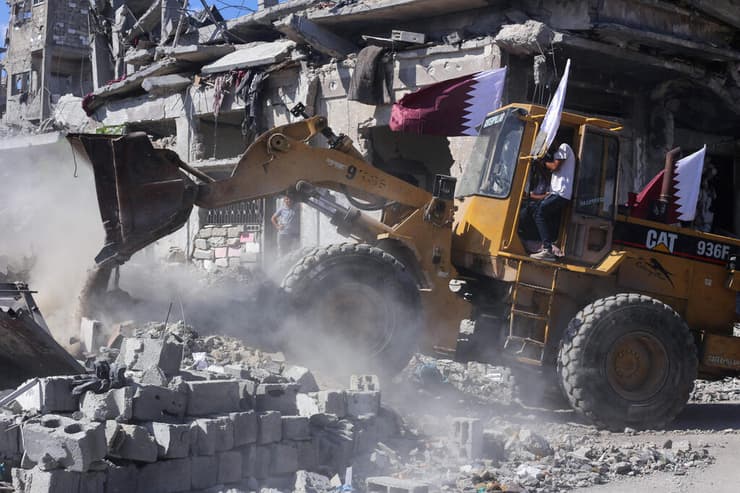
Hamas also recently announced a "self-surrender project" - a call for those "suspected of collaboration" to voluntarily surrender themselves to internal security. But activists in Gaza warn that this is a trap, and one of them told Ynet that"people who responded to the call disappeared. In some cases, bodies were found two days later."
The terrorist organization refuses to give up its weapons, and agrees not to control the Strip provided that another Palestinian body controls it, and not a foreign entity. However, that same force is also supposed to ensure that it obtains a monopoly on weapons, which is expected to lead to clashes with Hamas. The future is uncertain, both in light of Israel's refusal to allow the Palestinian Authority to return to the Strip, and since it appears that the terrorist organization will try to maintain at least some influence in the governing system. These developments could lead, as Trump himself warned, to Israel renewing the fire.
Gaza reconstruction - no less than a decade
Tractors with Qatari and Egyptian flags on them are already visible on the streets of Khan Yunis and Deir al-Balah - the first sign of the beginning of the reconstruction phase. According to
Nadav Eyal's advertisement on Ynet in July
Qatar has pledged to provide funding for civilian projects, but the condition is that the work be carried out under international supervision.
The money could also be used for tunnels. A tractor with a Qatari flag clears rubble in Gaza (Photo: Reuters/REUTERS/Ebrahim Hajjaj)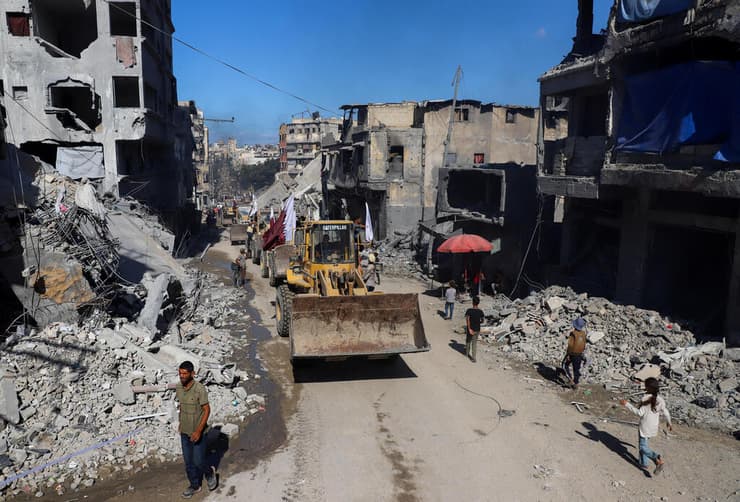
According to the data, 55 million tons of rubble currently cover the Gaza Strip, and more than 425,000 housing units have been partially or completely destroyed. The UN estimated the cost of reconstruction at at least $70 billion. At a conference held this week in Geneva, a representative of the UN Development Program (UNDP) noted that"there are positive indications from a number of Arab countries, the US and Europe" - but warned that this is a "long, complex and challenging" process.
Trump, we should note, wants the US, Israel, Arab countries, and private investors to reap profits from all of this, and wealthy individuals are also stirring the pot with
A utopian vision in which Gaza is prosperous with giant factories and cross-border railway lines
- But this is a plan that is doubtful to be even feasible. At the same time,
The biggest fear in the IDF
It is that Hamas will utilize the large amounts of money that will be transferred - including from countries that support it, such as Turkey and Qatar - also for the benefit of rebuilding its military wing, terrorist infrastructure, and tunnels.
Meanwhile, hundreds of thousands of Palestinians live in tents, schools, makeshift shelters made of tarpaulins - and even among the rubble."We live inside what was once our home," a resident of Shajaiyah told Reuters."There is no water, no electricity - just dust and memories."
Meanwhile, the security establishment continues to prepare to open the Rafah Crossing for the entry and exit of Gaza residents only - but for now it remains closed, in light of Hamas' violations surrounding the issue of the return of the fallen. According to the signed agreement, the crossing will be allocated to the movement of people only and not to humanitarian aid, which continues to enter the Strip through the Kerem Shalom Crossing and other crossings after Israeli inspection.
"We are falling apart morally and economically." Hamas activists take revenge on "Wanted"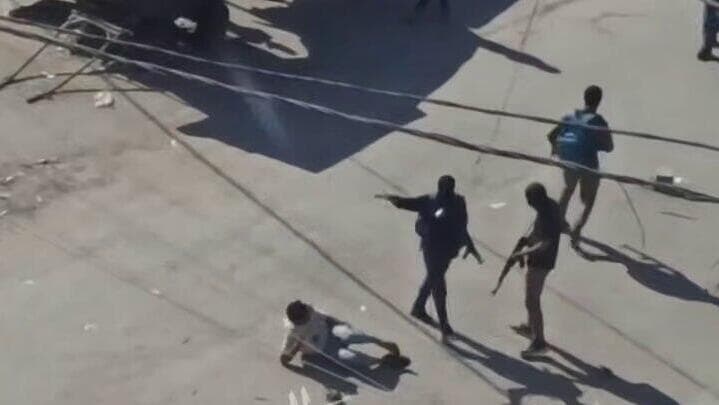
The humanitarian clause in the agreement is similar to the
Ceasefire in January 2025
and allows the entry of 600 aid trucks from the UN and other organizations, including food, medicine, shelter equipment, fuel, cooking gas, and more. The agreement also regulated the free movement of trucks from north to south, as well as the exit and return of residents through the Rafah crossing - which is said to still be closed.
In the shadow of the hardship in the Gaza Strip itself, economic gaps have re-emerged - Hamas members, merchants close to the organization, and local capitalists continue to enjoy access to all kinds of products, while"ordinary" residents struggle for a loaf of bread. As the flow of aid increases, access to food becomes easier, and so do the prices of basic consumer goods in the Strip - but many Gazans still suffer from shortages, and the prices of goods fluctuate up and down at a dizzying pace.
The UN warns that the recent price declines observed may only be temporary, as"without a stable mechanism for civilian supply, the Strip could very quickly return to acute shortages and complete dependence on international aid."
Under this reality, in recent weeks, shocking cases of

